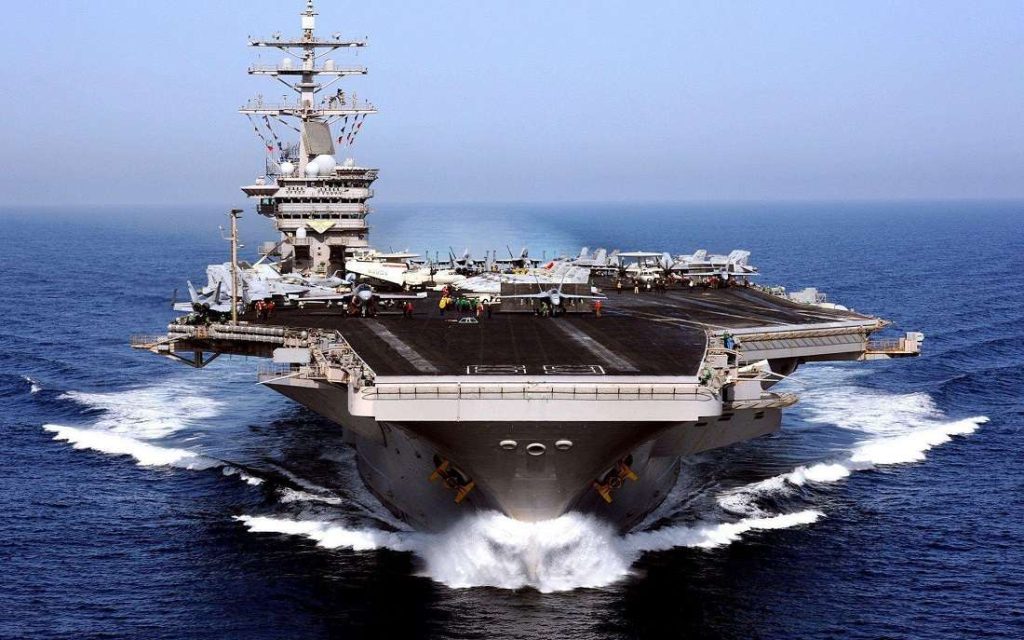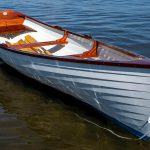Aircraft carriers are huge and are used to deploy and recover aircraft easily. In other words, they are floating airbases that can transport a number of aircraft from one part of the world to another, and they can do this in a matter of days or weeks. This helps the country owning the aircraft carrier to setup a base in any part of the world instead of having a stationary one in one location.
Modern aircraft carriers are powered by nuclear reactors that run steam turbines. Some carriers have two nuclear reactors to power them.
Components of Aircraft Carriers
An aircraft carrier consists of:
· Runway
: The runway is the flat part of the deck where planes take off and land. Some aircraft carriers provide a steam powered catapult during take-off so that the aircrafts are propelled with enough speed to take off in the short distance that is provided on the aircraft carrier. As for landing, the aircrafts rely on tailhooks, which are small hooks at the rear bottom of the aircraft that hook onto the arrestor wires that are stretched across the deck. These arrestor wires bring the aircraft to a halt in less than three seconds after they touch the landing strip of the aircraft carrier. A bolter is also provided so that any aircrafts that miss the arrestors are able to take of without hitting other aircrafts.
· Hangar:
The hangar is the place below the deck where aircrafts are kept when not in use or during storms to protect them from damage due to weather. Moreover, hangars are used to station the aircraft and take them to the deck only when they are needed so that there is enough space on the deck..
· Other:
Other key places on an aircraft carrier include areas for the crew to rest and to store weapons and food rations.
The main configurations of aircraft carriers are:
· Short Take-Off Vertical Landing (STOVL):
These aircraft carriers mainly support helicopters and aircrafts with vertical take offs like Harriers.
· Catapult Assisted Take-Off but Arrested Recovery:
This is one of the most widely used configurations and is the biggest of all the carriers. They have a very long deck and carry more aircrafts than other carriers
· Short Take-Off but Arrested Recovery: These carriers support vertical take off aircrafts, helicopters, and other aircrafts that are not heavy and can be stopped on short runways using arrestors.
Aircraft Carrier Personnel
There are various people on an aircraft carrier who are responsible for various ongoing activities that are taking place on the ship like taking off, landing, and navigating. The key categories of aircraft carrier personnel are:
- Shooters: The shooters are key people whose job is to monitor the take-offs and landings of aircrafts.
- Handlers: The handlers’ job is to work from inside the island of the flight deck and are responsible for the movement of aircraft before and after launching. In short, they make preparations for the landing and take-off of aircrafts.
- Air Boss: The job of the air boss is one of high authority like a commander. They are responsible for controlling take-offs and landings. They sit inside the tower in the aircraft carrier and monitor such activities.
Current Aircraft Carriers
There are currently ten countries that own air craft carriers. These countries are the United States of America, the United Kingdom, Russia, India, Japan, Thailand, Spain, Italy, France, and Brazil. Other than the USA, which has eleven aircraft carriers, and Itay, which owns two, UK which has 4(including the aircraft carrier from Japan, the HMS Ocean)all other countries own one each. These countries are also contemplating building better and bigger warships including aircraft carriers in the near future.
Thus, aircraft carriers are highly capable of military operations even when they are faraway from their country. And, such ships are useful in transporting aircrafts and military personnel.


